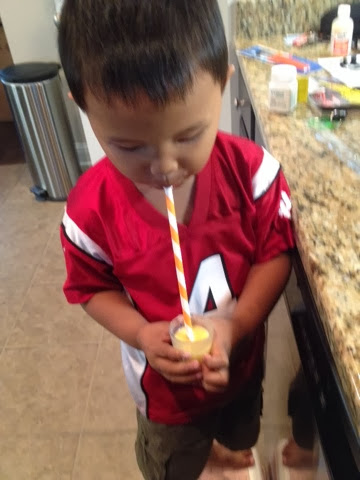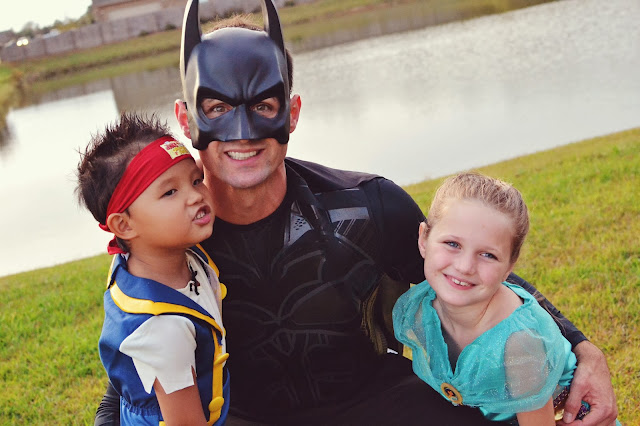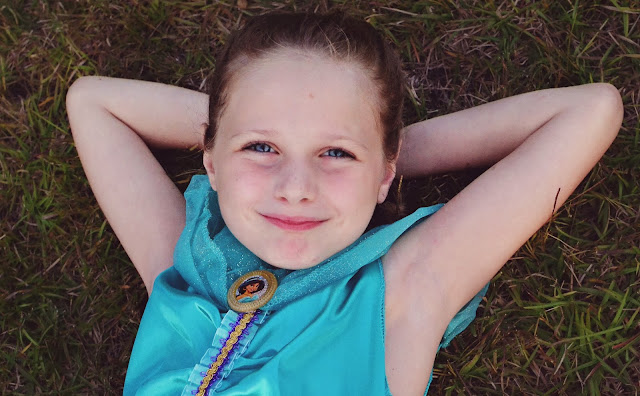I started this post more than a month ago, but life got busy as we determined Chengbin needed a port & also was scheduled for his annual ferriscan in Atlanta. So even though it's late, hope it is helpful to anyone trying to learn more about thalassemia.
For Chengbin's third transfusion since arriving in the US, I thought it was important to show you all what a typical transfusion day is like and go over our treatment plan for him. I was looking at an agency's individual list the other day and was shocked to find four children awaiting forever families that have thalassemia!! These are amazing, wonderful kids who may not have a "cure" but DO have a VERY manageable medical condition!! So here it goes..
Chengbin has beta thalassemia major. It is the most severe form of thalassemia, requiring blood transfusions every 2-4 weeks in order to develop normally. He also needs chelation therapy, which simply stated, is medication that takes the excessive amount of iron in his body back out. He gets the excessive amount of iron through his blood transfusions. Chengbin's condition is genetic. Both of his parents were carriers of a gene defect, neither may have even known they had... The genetic defect causes his body to produce defective red blood cells. While the average person's red blood cells are good 120-160 days, his are good less than a week.
If left alone, with no blood transfusions, Chengbin would be severely anemic all the time and his bone marrow would be in overdrive simply trying to produce enough red blood cells to keep him circulating oxygen and alive. The bone marrow would expand causing bone deformities. It would work so hard to produce the red blood cells that he would stop growing as well. Ultimately he would die from organ failure resulting from years of severe anemia.
The goal of transfusions is to suppress his bone marrow from making red blood cells. We transfuse healthy red blood cells into him so that the bone marrow doesn't need to go into overdrive trying to make them. It can focus on helping his bones grow healthy and do all the other wonderful things it does! It also helps keep him from going into a severely anemic state.
So what is life like with him?
Normal. He is a healthy, smart, and active little boy. He goes to school. He plays outside and rides his bike. Aside from being a little more tired and fussy the couple days leading up to transfusion, he is like any other kid.
What is his treatment plan?
Every thal patient is different in how long they go between transfusions. Right now Chengbin goes 3 weeks between them. We may begin to look into finding direct blood donors which would give us the freshest, healthiest red blood cells. This could potentially give us an additional week between transfusions. He also takes an oral medication daily. The medication is part of our chelation regimen.
 |
| We check his height & weight to ensure he gets the proper amount of blood. |
 |
| In China he spent 3 days hospitalized in case of blood reactions. Here his blood is typed and screened so that he receives an exact match. He has had no blood reactions since coming home & the transfusion is an outpatient procedure. |
 |
He is seen by the hematologist prior to transfusion. For non-port patients, medicine can be applied to numb the areas where the nurses will try to start a line for bloodwork & transfusion.
|
What is transfusion day like?
We go into the outpatient transfusion center at 8:30am. Because we live over 45 minutes away, we first draw blood to check his hemoglobin and complete blood typing through the blood bank. Chengbin has a LOT of scarring from years of transfusions. He has them in his hands, arms, feet. He even has a permanent vein scar on his forehead from when he was very young. Honestly, the least number of sticks we've had to get a line has been 4. During our 3rd transfusion we had extreme difficulty and did not get the blood. We went back today and got him on the 3rd stick. We will probably schedule surgery to get a port. This will provide easier access to his vein for transfusions & blood work, allowing better quality of life for him. It will also give his veins some time to heal. We usually start the blood by noon and the actual transfusion takes 3-4 hours.
Could I handle a child with beta thalassemia major?
Most people find thalassemia major to be very manageable. However, it is important to note that this is a lifelong disorder. The only cure is bone marrow transplant (which is considered VERY risky). Life expectancy is considered normal as long as the treatment plan is followed. There are no statistics that are accurate to show life expectancy, because drug therapies have changed so much in a generation. A thal major child will always need blood transfusions. We find his condition to be very manageable. We have a day at the transfusion bay every 3 weeks. He also had to have baseline ear & eyes checks to begin medication. He will have a yearly ferriscan at the Thalassemia Clinic in Atlanta to check the levels of iron buildup in his organs so that we can ensure chelation therapy is on track. He also receives an annual check up from an endocrinologist to ensure his growth is on track.
Our family is very happy to have chosen a child with thal. It works for us. He is wonderful and we are already looking to bring home another child with thalassemia. The treatment he receives here in America makes all the difference for his future. We wanted to find a child that could benefit from the level of insurance we have. Without proper treatment, he would have died in China, but not here! What an amazing gift! To go from death sentence to a long, healthy life??? My hope is that by sharing this someone else will be willing to take the leap of faith and bring a thalassemia child home. If you have questions or need some help finding a thal child to be matched with, please contact me. I am always happy to help an orphan find a family! :)
Thanks for stopping by,
Fannie
























































